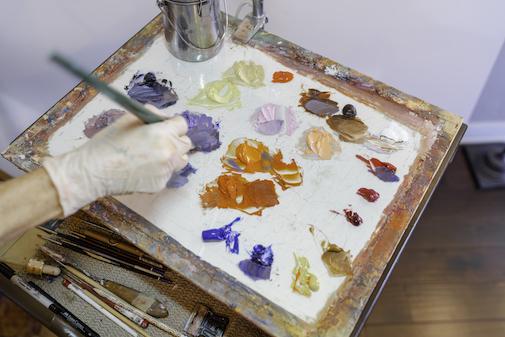The History of the Modern Art Era
At the dawn of the 20th century, the world was filled with excitement and anxiety at what was to come. As time went on, the world was faced with two World Wars, an economic boom and collapse, unbelievable technological advancements, and so much more. Artists began to experiment, using their feelings about the ever-changing world around them to fuel their creativity. They poured their feelings onto canvas, allowing their brushes to express what they wanted. It was at this time that the Modern Art era was born.
The Beginning of the Modern Art Era
The Industrial Revolution (1760-1840) set the world ablaze. The world began moving at a rapid pace and it almost felt difficult for many to keep up with all of the incredible changes. From industry to agriculture, technological advancements changed so much of how the world was run.
Inspired by the rapidly changing world around them, artists and other creatives yearned to create works that captured their unique experiences. Beginning around 1860, artists began to experiment with various mediums, creating what became known as the Modern Art era.
Modern Art Movements
The cultural significance of the Modern Art era helped to create and boost the popularity of many different art movements.
- Cubism – Cubism is one the most-well known movements to come from the Modern Art era. It received its name in 1908 when art critic Louis Vauxelles mocked Georges Braque’s painting House at L’Estaque as being made up of cubes. The Cubist movement breaks down objects, reassembling them, creating an abstract piece of art. The most famous Cubist artist is Pablo Picasso. Surrealist artists such as Salvador Dali and Frida Kahlo also dabbled in Cubism.
- Dadaism – Dadaism is an avant garde movement that began in the early 20th century. The movement embraced experimentalism, was anti-establishment, and was even described as “anti-art.” Max Ernst, Marcel Duchamp, and Man Ray are some of the most famous Dada artists.
- Surrealism – The Surrealism art movement was influenced by the end of World War I and Dada. Surrealist art pieces were surprising and unnerving at times, juxtaposing realism with things like strange creatures. Some of the most famous Surrealist artists include Salvador Dali, Frida Kahlo, and Rene Magritte.
Cyndy Carstens is a Scottsdale-based artist who creates artwork that captures the beauty of the world. Her artwork references a variety of different art movements, from the Constructivist geometric shapes of her contemporary landscapes to the Cubist principles of art reflecting our world as abstract, subjective, and multi-dimensional. To learn more about her art, contact her today.


